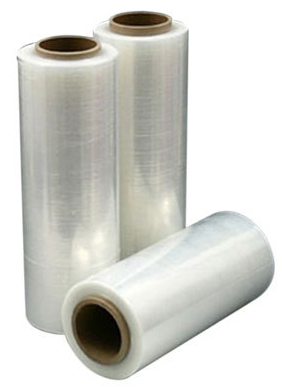Stretch Film
By combining a variety of materials, resins and tackifiers with stretch film’s basic building block, polyethylene, different types of films have been developed to obtain a desired set of film properties. Your Signode salesperson carefully studies how your product is handled, stored, shipped and received in order to make the best possible recommendation for your operation.

Film Properties:
- Cling– the ability of film to adhere to itself. Needed to bond film layers together and to secure film tail to load.
- Tear and puncture resistance– ability to withstand perforation. Helps prevent total web failure from small holes, nicks and tears.
- Yield strength– point at which film will stretch further with little or no increase in force. High yield strength ensures consistent stretching of conventional grade films.
- Tensile strength– strength of film at its breaking point
- Ultimate elongation– percent of stretch at the point of film failure. Films with low ultimate elongation do not work well when prestretched
Features:
- Protection from moisture, dirt & abrasion
- Performance, load retention and protection
- Cost effective
- User friendly
- Economical transportation/shelf space
- Environmental friendly
Application methods:
- Hand wrapping– labor intensive, manual method (High film usage)
- Conventional wrapping– machine applied method (10-50% stretch). Requires moderate cling, high-yield film.
- Non-powered prestretch– Simple prestretch (50-100%) using fixed gear. Requires film with medium cling. (Moderate film usage)
- Prestretching film– While stretching film makes it thinner, unitizing strength actually improves as stretch levels increase. Because prestretched film resists further stretching, it holds pallets loads better than unstretched film, which can stretch under the force of transit, causing products to shift or fall off pallets.
- Powered prestretch– Highest prestretch (100-300%). Requires high performance blown films with high cling. (Low film usage)

